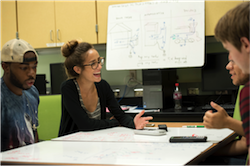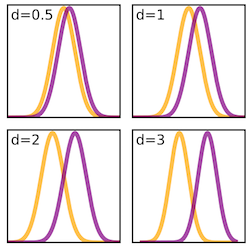Best Practices Recommendations
10 Recommendations are tagged with "Best Practices"

Best Practices for Administering Attitudes and Beliefs Surveys in Physics
June 13, 2019 by Adrian Madsen, Sam McKagan, Ellie Sayre; PhysPort director, assistant director, and research directorPhysics education researchers have created several surveys to assess one important aspect of thinking like a physicist: what students believe that learning physics is all about. In this article, we introduce attitudes and beliefs surveys and give advice on how to choose, administer, and score them in your classes.
assessment, beliefs and attitudes, best practices

Best Practices for Administering Concept Inventories
May 28, 2019 by Adrian Madsen, Sam McKagan, Ellie Sayre; PhysPort director, assistant director, and research directorThere are a plethora of concept inventories in physics available for faculty to use. These multiple-choice research-based tests about physics concepts are valuable because they allow for standardized comparisons among institutions, instructors, or over time. In order for these comparisons to be meaningful, you should use best practices for administering and interpreting the tests.
assessment, concept inventories, best practices

What kind of whiteboards should I use?
September 22, 2017 by Sam McKagan, PhysPort directorWhiteboards are a great tool for students to work out ideas individually and collaboratively, and to present those ideas. Based on reports from expert educators, this recommendation discusses the questions you should ask when choosing whiteboards, and the advantages and disadvantages of each type of whiteboard, product suggestions, and the advantages of whiteboards over other collaboration tools.
whiteboarding, best practices, SCALE-UP, Modeling Instruction
Best practices for whiteboarding in the physics classroom
September 22, 2017 by Sam McKagan and Daryl McPaddenWhiteboards are an indispensable tool that physicists use to work out ideas individually and collaboratively, and to present those ideas, both for public discussion and critique of tentative ideas and for communication of more fully formed ideas. In this recommendation, we offer guidance for how to use whiteboarding effectively in your classroom.
whiteboarding, best practices, SCALE-UP, Modeling Instruction

Effect size: What is it and when and how should I use it?
March 18, 2016 by Adrian Madsen, Eleanor Sayre, and Sam McKaganWhen making changes in the way we teach our physics classes, we often want to measure the impact of these changes on our students' learning. Often we do this by administering a research-based assessment at the beginning and end of the class and calculating the change between pre and post. There are several different measures that can be used to tell you, in one number, how to compare learning...
assessment, concept inventories, effect size, best practices

Normalized gain: What is it and when and how should I use it?
March 18, 2016 by Sam McKagan, Eleanor Sayre, and Adrian MadsenIntroduction to normalized gain:
The normalized gain, introduced by Hake in 1998 "as a rough measure of the effectiveness of a course in promoting conceptual understanding," has become the standard measure for reporting scores on research-based concept inventories. Hake defined the average normalized gain as:
<g> = (<Post> - <Pre>)/(100 - <Pre>)
assessment, concept inventories, normalized gain, best practices

How can I get students to have productive discussions of clicker questions?
March 15, 2016 by Jenny Knight and Sarah Wise, University of Colorado - BoulderClicker questions are increasingly being used to stimulate student discussion and provide faculty and students with timely feedback. Research suggests that discussing clicker questions can lead to increased student learning, and that students exchanging constructive criticism can generate conceptual change.
What can you do as an instructor to encourage all students to have…
clickers, group work, active learning, best practices, peer instruction

Best practices for facilitating Periscope lessons for TA/LA training or faculty PD
February 10, 2016 by Rachel Scherr, creator of PeriscopePeriscope connects authentic video episodes from best-practices physics classrooms to big questions of teaching and learning. Periscope lessons are useful if you:
-supervise learning assistants (LAs) or teaching assistants (TAs)
-lead faculty development
-seek to improve physics teaching in your department
-want to improve your own physics teaching
Periscope, teaching assistant training, learning assistant training, faculty professional development, active learning, group work, best practices

Administering research-based assessments online
February 10, 2016 by Adrian Madsen & Sam McKagan, PhysPort Assistant Director & DirectorAn overview of ways to administer research-based assessments online. Includes general guidelines and details about platforms for administering specific assessments including the FCI, FMCE, BEMA, CSEM, PCA, SOSESC-P, EMCS, CLASS, LSCI, E-CLASS, PLIC, FliP-CoIn, and MBT.
assessment, concept inventories, best practices, online tools

How can I set up an effective mentoring program to support students in my department?
February 10, 2016 by Ramón S. BarthelemyAs physicists and physics educators we know that a physics education is much more than computational problem solving and bookwork. Knowledge and skills needed to navigate a career pathway in physics that are often learned informally include:
-the unspoken requirement to do undergraduate research
-the necessity to study for the physics GRE well in advance of the test date
-strong research lab...



